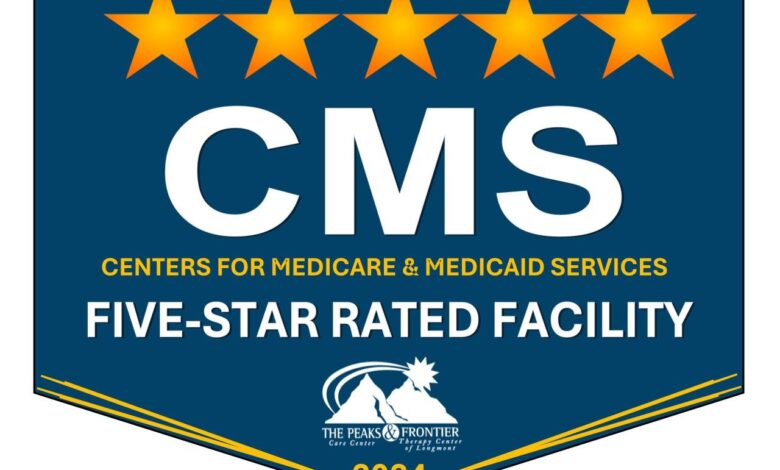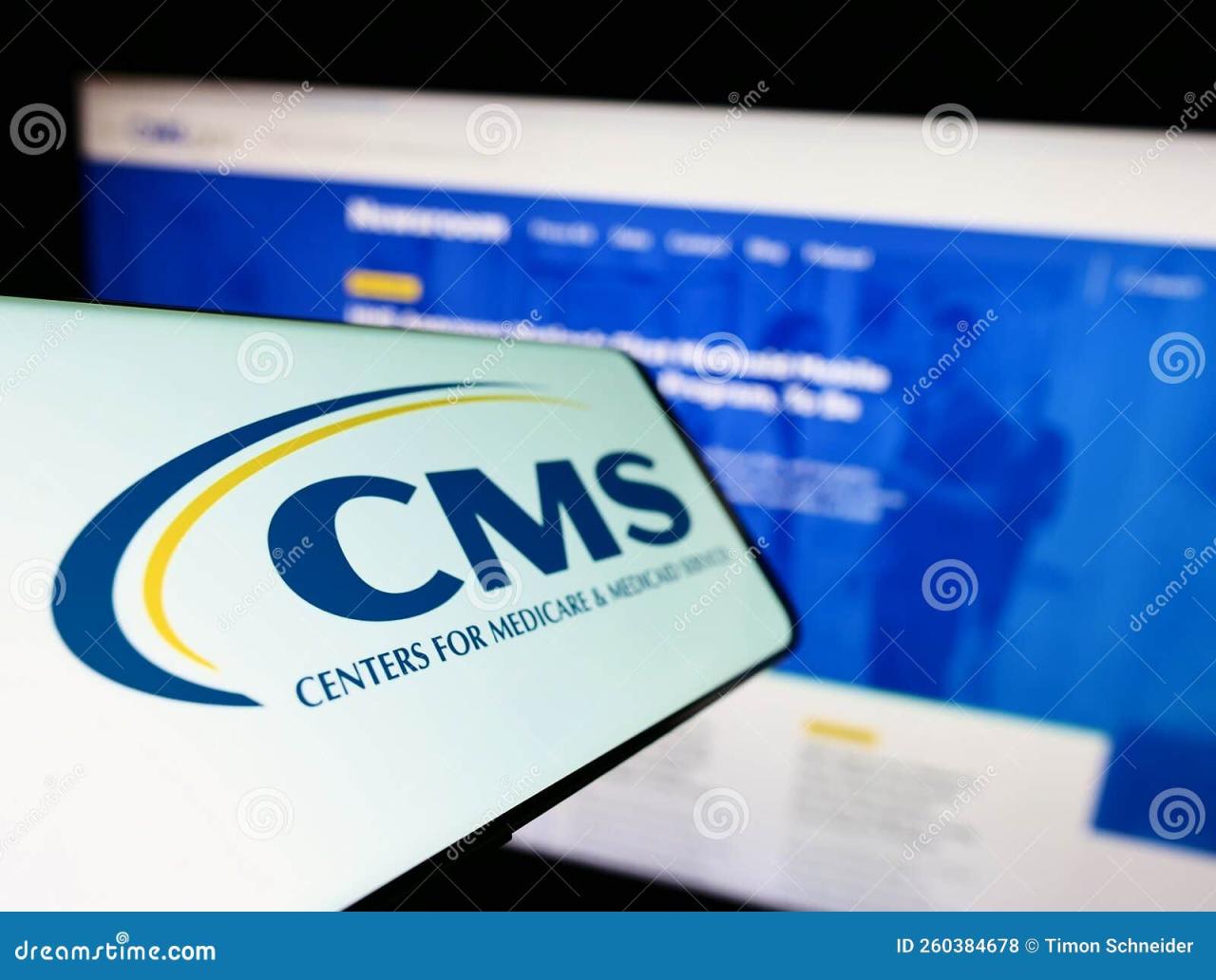
Prior Authorization Patient Harm AMA Survey & CMS Rules
Prior authorization patient harm AMA physician survey CMS rule: This explosive issue is shaking up healthcare. Doctors are sounding the alarm, sharing heartbreaking stories of patients harmed by delays in getting necessary treatments due to prior authorization requirements. The American Medical Association (AMA) recently released a survey highlighting the devastating consequences, and the CMS rules surrounding this process are under intense scrutiny.
We’ll dive into the AMA’s findings, examine the CMS regulations, and explore the human cost of these bureaucratic hurdles.
This post unpacks the complex interplay between prior authorization, patient safety, and the regulatory landscape. We’ll look at real-world examples of delayed care leading to preventable harm, analyze the AMA survey data, and discuss potential solutions, including technological advancements and alternative authorization methods. Get ready for a deep dive into a critical issue impacting both doctors and patients.
Impact of Prior Authorization on Patient Care
Prior authorization (PA), the process by which a healthcare provider must obtain approval from an insurer before providing certain treatments or medications, is increasingly impacting patient care. While intended to control costs, the delays and administrative burdens associated with PA are leading to significant negative consequences for patients, potentially jeopardizing their health and well-being.
Negative Consequences of Prior Authorization Delays
Delays in treatment caused by PA requirements can lead to a range of negative health outcomes. For patients with chronic conditions, delayed access to necessary medications can result in disease progression, increased symptom severity, and a decline in overall quality of life. For patients with acute conditions, delays can lead to avoidable hospitalizations, complications, and even death. The added stress and anxiety of navigating the PA process also contribute to the overall negative impact on patient well-being.
This stress can exacerbate existing health conditions and negatively impact adherence to treatment plans.
Examples of Preventable Harm Due to Prior Authorization Delays
Numerous real-world examples illustrate the potential for harm caused by PA delays. Consider a patient with a severe infection requiring immediate antibiotic treatment. If the prior authorization process takes several days, the infection could worsen, potentially leading to sepsis or organ damage. Similarly, a patient with cancer requiring chemotherapy might experience a delay in treatment due to PA, leading to tumor growth and a reduced chance of successful treatment.
In cases involving mental health medications, delays can exacerbate symptoms, leading to increased risk of self-harm or suicide. These are not isolated incidents; studies consistently show a correlation between PA delays and adverse patient outcomes.
Comparison of Patient Experiences with and without Prior Authorization
Patients who do not require prior authorization generally experience a smoother and more timely access to necessary care. They can begin treatment promptly, leading to better health outcomes and improved quality of life. In contrast, patients navigating the PA process often experience frustration, delays, and increased anxiety. They may need to spend significant time on the phone with insurance companies, gather extensive documentation, and repeatedly follow up on their requests.
This added burden falls disproportionately on patients already struggling with health issues. The difference in experience highlights the significant negative impact of PA on patient-centered care.
Medication Types Frequently Subject to Prior Authorization and Associated Delays
The following table illustrates the types of medications frequently subject to prior authorization and the typical delays encountered:
| Medication Type | Average Delay (Days) | Potential Consequences of Delay | Notes |
|---|---|---|---|
| Specialty Medications (e.g., biologics for autoimmune diseases) | 7-14 | Disease progression, increased symptom severity, hospitalization | Often requires extensive documentation and clinical justification |
| Opioids for chronic pain | 3-7 | Increased pain, functional limitations, reliance on less effective pain management strategies | Stringent requirements due to opioid crisis |
| Certain mental health medications | 5-10 | Exacerbation of symptoms, increased risk of relapse, hospitalization | Requires careful monitoring and documentation of patient progress |
| Expensive insulin products | 2-5 | Hyperglycemia, diabetic ketoacidosis, hospitalization | Accessibility issues particularly impact vulnerable populations |
AMA Physician Survey Findings on Prior Authorization
The American Medical Association (AMA) has conducted several surveys exploring the impact of prior authorization on physician workflows and patient care. These surveys consistently reveal significant negative consequences, impacting physician time, patient access to timely care, and overall patient outcomes. This section summarizes key findings from these surveys, providing specific examples and discussing methodological considerations.
Key Findings of the AMA Physician Surveys
The AMA’s physician surveys consistently demonstrate that prior authorization requirements place a substantial burden on physicians and negatively affect patient care. Key findings often include increased administrative burden, delays in treatment, and frustration among both physicians and patients. Studies reveal a significant percentage of physicians reporting that prior authorization processes consume a considerable amount of their workday, diverting time away from direct patient care.
Furthermore, the surveys highlight the detrimental impact on patient access to timely and appropriate care, with many physicians reporting instances where delays caused by prior authorization led to worsened patient conditions.
Physician Anecdotes Illustrating Negative Effects
The AMA surveys often include qualitative data from physicians detailing their experiences with prior authorization. One common anecdote involves a physician describing the delay in starting cancer treatment for a patient due to lengthy prior authorization processes. The delay, caused by multiple back-and-forth communications with insurance companies, resulted in a more advanced stage of cancer at the time of treatment initiation.
Another frequent example highlights the frustration of physicians facing multiple denials for medically necessary treatments, requiring extensive documentation and appeals to secure approval. These anecdotes illustrate the real-world impact of prior authorization on both physicians and their patients.
Methodology and Potential Limitations of the AMA Surveys, Prior authorization patient harm AMA physician survey CMS rule
The AMA typically employs large-scale, online surveys of its physician members to gather data on prior authorization. The surveys often utilize stratified sampling techniques to ensure representation across various specialties and practice settings. However, potential limitations exist. Response rates may not always be high, potentially leading to sampling bias. Additionally, the self-reported nature of the data might introduce subjectivity.
Finally, the surveys might not capture the experiences of physicians who have left practice due to administrative burdens, leading to an underestimation of the problem’s true scope.
Comparison with Other Relevant Studies
Findings from the AMA physician surveys align with results from other independent studies on prior authorization. Research consistently points towards increased administrative burden, delays in care, and negative impacts on patient outcomes. Studies using different methodologies, such as claims data analysis or patient surveys, have corroborated the AMA’s findings, reinforcing the widespread concern regarding the detrimental effects of prior authorization.
While the specific numbers may vary across studies due to differences in methodology and population samples, the overall conclusion remains consistent: prior authorization significantly impacts healthcare delivery and patient care.
CMS Rule Changes and Prior Authorization
The Centers for Medicare & Medicaid Services (CMS) plays a significant role in shaping prior authorization (PA) processes, impacting both healthcare providers and patients. Understanding the current rules and recent changes is crucial for navigating the complexities of this system. These regulations aim to balance the need for cost control with the delivery of timely and appropriate patient care.CMS rules and regulations regarding prior authorization are multifaceted and constantly evolving.
They generally aim to ensure that only medically necessary services are provided and that taxpayer dollars are used efficiently. However, the implementation and impact of these regulations vary considerably depending on the specific payer and the type of service involved. The goal is to streamline the process while still maintaining quality of care.
Current CMS Rules and Regulations
The current CMS rules concerning prior authorization are primarily embedded within various regulations and guidance documents related to Medicare and Medicaid programs. These rules dictate the criteria for requiring prior authorization for specific services, the processes involved in submitting requests, and the timeframes within which decisions must be made. They also address appeals processes for denied requests. Specific requirements differ depending on the type of service and the specific payer (e.g., Medicare Part A, Medicare Part B, Medicaid).
While there isn’t one single, comprehensive document outlining all PA rules, relevant information can be found across numerous CMS publications, including those related to specific programs and payment policies. Compliance requires navigating a complex web of regulations.
Specific Changes in CMS Rules Impacting Prior Authorization Processes
Several recent CMS rule changes have directly impacted prior authorization processes. For example, there’s been a push towards greater transparency and standardization. This includes efforts to make the criteria for prior authorization more explicit and to improve the efficiency of the authorization process itself. CMS has also focused on reducing the administrative burden on providers through initiatives such as promoting electronic prior authorization systems and data sharing between payers and providers.
Specific examples include the increased emphasis on using electronic systems to submit and track PA requests and the development of standardized claim forms and data elements to reduce errors and delays. These changes aim to improve efficiency and reduce administrative burden on providers.
The AMA physician survey highlights the devastating impact of prior authorization delays on patient care, a problem exacerbated by the current CMS rule. Improving care coordination is crucial, and I was struck by this article on reimagining collaboration in senior care a technology driven approach , as streamlined communication is key to avoiding these harmful delays. Ultimately, better technology could help mitigate the negative consequences documented in the AMA’s findings on prior authorization and patient harm.
Potential Effects of Rule Changes on Patient Care and Physician Workflows
The effects of these CMS rule changes are mixed. While some changes, such as the move towards electronic systems, are intended to streamline processes and reduce delays, others may present challenges. For example, the increased focus on standardization may require significant changes to existing workflows and IT systems for providers. The ultimate impact on patient care depends on how effectively these changes are implemented and whether they truly reduce administrative burdens without compromising the quality of care.
Faster approval times can lead to timely treatment, while continued delays can hinder access to needed care. The potential for improved care is high if the changes are implemented successfully, but challenges remain in ensuring smooth transitions.
Flowchart Illustrating the Prior Authorization Process Under Current CMS Rules
The following describes a simplified flowchart illustrating the typical prior authorization process under current CMS rules. This is a generalized representation, and the specific steps and timelines may vary significantly based on the payer, the service, and other factors.Imagine a flowchart with the following steps:
1. Physician Determines Need for Prior Authorization
The physician determines if prior authorization is required for a specific service based on payer guidelines.
2. Physician Submits Prior Authorization Request
The physician submits the request electronically or via paper, including all necessary supporting documentation.
3. Payer Receives and Reviews Request
The payer receives the request and reviews the documentation to determine medical necessity.
4. Payer Approves or Denies Request
The payer either approves or denies the request, communicating the decision to the physician.
5. Physician Notifies Patient
The physician informs the patient of the payer’s decision.
6. Appeal (if applicable)
If the request is denied, the physician can initiate an appeal process according to payer guidelines.
7. Service Provided (if approved)
If approved, the service is provided to the patient.This flowchart simplifies a complex process, but it highlights the key stages involved in obtaining prior authorization under CMS rules. The actual process can be significantly more intricate depending on the specific payer and the service in question.
Physician Perspectives on Prior Authorization Processes

Source: dreamstime.com
Prior authorization (PA) has become a significant source of frustration and administrative burden for physicians across various specialties. The impact extends beyond simple paperwork, affecting patient care, physician-patient relationships, and ultimately, the efficiency of the healthcare system. This section delves into the challenges physicians face navigating the complex world of prior authorization.
The AMA physician survey highlights the serious patient harm caused by prior authorization delays, a problem exacerbated by the CMS rule changes. It’s a frustrating situation, mirroring the struggles faced by nurses, as seen in the recent new york state nurse strike NYSNA Montefiore Mount Sinai , where staffing shortages also impact patient care. Ultimately, both situations point to systemic issues demanding immediate attention to improve patient safety and healthcare access.
Challenges Faced by Physicians Due to Prior Authorization Requirements
The complexities of PA processes present numerous hurdles for physicians. These include navigating varying requirements across different insurance payers, dealing with inconsistent and often unclear criteria for approval, and spending significant time completing extensive forms and documentation. The sheer volume of requests can overwhelm administrative staff, diverting resources away from direct patient care. Further complicating matters are delays in obtaining approvals, which can lead to treatment interruptions and negatively impact patient outcomes.
In some cases, denials can occur despite meeting all stated criteria, leading to further appeals and delays. The lack of standardization across payers exacerbates these challenges, forcing physicians to learn and adapt to multiple, often conflicting, systems.
Administrative Burden of Prior Authorization on Physicians
The administrative burden imposed by PA is substantial. Physicians and their staff spend countless hours gathering necessary medical records, completing detailed forms, and following up on requests. This time could be better spent on direct patient care, improving the quality of patient interactions, and ultimately enhancing the overall efficiency of the practice. Many practices report dedicating entire staff members solely to managing PA requests, representing a significant financial and resource commitment.
The cost associated with this administrative burden is often passed on to patients, either directly through increased fees or indirectly through higher healthcare costs. For smaller practices, the burden can be particularly overwhelming, potentially leading to burnout and even practice closures.
Strategies Physicians Employ to Navigate Prior Authorization Processes Efficiently
Physicians have developed various strategies to navigate the PA labyrinth. These include utilizing dedicated software and online portals designed to streamline the process, employing specialized billing and coding staff, and proactively educating patients about the PA process. Some practices utilize pre-authorization checklists and templates to ensure all necessary information is readily available. Collaboration with other healthcare providers and leveraging electronic health records (EHR) systems can also improve efficiency.
Many physicians are also actively advocating for changes in PA policies and procedures to reduce the administrative burden. Despite these efforts, the inherent inefficiencies of the system remain a significant concern.
Impact of Prior Authorization on Physician-Patient Relationships
The PA process can significantly impact the physician-patient relationship. Delays in treatment caused by PA denials or lengthy processing times can lead to patient frustration and anxiety. The need for physicians to spend time on administrative tasks rather than focusing on patient care can detract from the quality of the interaction. Patients may perceive this as a lack of attention or concern, potentially impacting trust and communication.
Furthermore, the complexities of the PA process can be confusing for patients, leading to feelings of helplessness and frustration. Open communication and proactive patient education are crucial in mitigating these negative impacts. However, the fundamental issue remains: PA processes often interfere with the core physician-patient relationship, prioritizing administrative tasks over direct patient care.
Alternative Approaches to Prior Authorization
The current prior authorization (PA) system, while intended to control healthcare costs, often creates significant hurdles for both patients and physicians. Its complexities and delays can lead to treatment disruptions and negatively impact patient outcomes. Fortunately, several alternative approaches aim to streamline the process and mitigate these negative consequences. This section will explore some of these alternatives, comparing their strengths and weaknesses, and considering their feasibility within the existing healthcare landscape.
Step Therapy Compared to Pre-Authorization
Step therapy and pre-authorization represent distinct approaches to managing medication access. Step therapy requires patients to try less expensive medications before accessing a preferred or more costly drug, while pre-authorization involves a prior review of a medication request before dispensing. Both aim to control costs, but their impacts on patient care differ significantly. Pre-authorization, while still requiring administrative effort, allows for a more direct assessment of medical necessity, potentially leading to quicker access to appropriate treatment.
Step therapy, conversely, can delay necessary treatment and cause unnecessary suffering if the initial, less expensive medication proves ineffective. The feasibility of either approach hinges on the ability of payers and providers to efficiently manage the administrative burden and ensure that patient needs remain the primary focus.
Benefits and Drawbacks of Step Therapy
Step therapy, while aiming to reduce costs, can introduce several drawbacks. The delay in accessing effective treatment can lead to worsening conditions, increased hospitalizations, and ultimately, higher overall healthcare costs. Patients may experience adverse effects from ineffective medications before accessing the appropriate treatment. Conversely, step therapy can encourage the use of more cost-effective medications when appropriate, potentially leading to savings in the long run.
The success of step therapy depends heavily on accurate assessment of patient needs and careful selection of the initial medication regimen. Implementation requires robust clinical guidelines and a system for effectively managing exceptions when step therapy proves inappropriate for a specific patient.
- Benefit: Potential cost savings by utilizing less expensive medications initially.
- Drawback: Delays in accessing effective treatment, leading to potential health complications.
- Drawback: Increased administrative burden for both providers and patients.
- Consideration: Requires robust clinical guidelines and exception management processes.
Benefits and Drawbacks of Pre-Authorization
Pre-authorization, while requiring upfront administrative work, offers advantages over step therapy. It allows for a more direct assessment of medical necessity, potentially reducing delays in accessing necessary treatment. It can also encourage more efficient communication between providers and payers, leading to better coordination of care. However, pre-authorization can still be burdensome for both providers and patients, requiring additional paperwork and potential delays.
The administrative costs associated with pre-authorization can be significant, potentially offsetting some of the cost savings. The feasibility of pre-authorization hinges on efficient processing systems and clear communication protocols.
- Benefit: More direct assessment of medical necessity, leading to potentially faster access to treatment.
- Benefit: Improved communication and coordination between providers and payers.
- Drawback: Administrative burden for providers and potential delays in treatment initiation.
- Drawback: Significant administrative costs associated with processing requests.
Feasibility of Implementing Alternative Approaches
Implementing alternative approaches requires a collaborative effort between payers, providers, and technology developers. Efficient electronic systems are crucial for streamlining the process and reducing administrative burden. Clear guidelines and protocols are essential to ensure consistent application and minimize the potential for bias or inequities. Successful implementation also necessitates a shift in mindset, focusing on patient needs and outcomes rather than solely on cost containment.
Examples of successful implementations could include collaborations between large health systems and insurance providers, leveraging data analytics to improve efficiency and personalize treatment plans. For instance, a health system could partner with an insurer to develop a shared platform for pre-authorization, integrating clinical data to expedite the approval process.
The Role of Technology in Improving Prior Authorization
The prior authorization process, while intended to ensure appropriate healthcare utilization, often creates significant delays and administrative burdens for both physicians and patients. Technology offers a powerful avenue to streamline this process, reducing friction and improving the overall experience. By automating tasks, integrating systems, and providing real-time data, technological solutions can significantly enhance efficiency and accuracy.Technology can streamline the prior authorization process by automating many of the manual steps involved.
The AMA physician survey on prior authorization’s impact on patient harm is alarming, highlighting the bureaucratic hurdles within the CMS rule. Given the potential for significant changes, the recent news that rfk jr confirmed hhs secretary robert f kennedy jr is particularly relevant. His stance on healthcare access could significantly influence future CMS regulations and hopefully streamline the prior authorization process, ultimately reducing patient harm.
This includes tasks such as form completion, submission, tracking, and status updates. Automation reduces the time spent on administrative tasks, allowing physicians and staff to focus on patient care. Furthermore, integrated systems allow for seamless data exchange between providers, payers, and pharmacies, minimizing the need for repeated data entry and reducing the potential for errors. Real-time data visibility enables proactive monitoring of authorization requests, facilitating quicker responses and reducing delays.
Automated Prior Authorization Systems
Automated prior authorization systems utilize software to manage the entire process, from initial submission to final approval. These systems often include features such as intelligent routing, automated form completion, and real-time status tracking. For example, a system might automatically populate a prior authorization form with patient information from the electronic health record (EHR), reducing manual data entry and the potential for errors.
The system then routes the request to the appropriate payer based on the patient’s insurance information, ensuring efficient processing. Real-time tracking allows physicians and staff to monitor the status of each request and receive notifications of any updates or required information. The improved efficiency translates directly to less time spent on administrative tasks and more time dedicated to patient care.
This, in turn, leads to better patient outcomes and increased physician satisfaction.
Integration with Electronic Health Records (EHRs)
The integration of prior authorization systems with EHRs is crucial for streamlining the process. This integration eliminates the need for manual data entry and reduces the risk of errors. For instance, patient demographics, diagnosis codes, and treatment plans can be automatically pulled from the EHR and populated into the prior authorization form. This seamless data flow reduces the administrative burden on physicians and their staff, freeing up time for patient interaction and clinical work.
Furthermore, integrated systems can facilitate communication between the physician and payer, allowing for quick resolution of any issues or discrepancies. This enhanced communication can significantly reduce the time required for authorization, ultimately improving patient care.
Real-time Decision Support Systems
Real-time decision support systems provide physicians with immediate feedback on the likelihood of prior authorization approval. These systems analyze patient data and treatment plans against payer guidelines to predict the probability of approval. This allows physicians to proactively address any potential issues before submitting the request, reducing the chance of delays or denials. For example, if the system identifies a potential issue with the treatment plan, it can alert the physician and suggest alternative options that are more likely to be approved.
This proactive approach significantly improves the efficiency of the prior authorization process and enhances patient care by ensuring timely access to necessary treatments.
Benefits and Challenges of Implementing Technological Solutions
Implementing technological solutions for prior authorization offers significant benefits, including reduced administrative burden, improved efficiency, and enhanced patient care. However, there are also challenges to consider, such as the cost of implementation, the need for staff training, and the potential for system integration issues. The upfront investment in new software and hardware can be substantial, but the long-term benefits often outweigh the initial costs.
Adequate staff training is crucial to ensure effective utilization of the new systems, and careful planning is necessary to address potential integration challenges with existing systems. Despite these challenges, the potential for improved patient care and physician workflow makes the investment in technological solutions a worthwhile endeavor.
Closing Notes

Source: peakscarecenter.com
The prior authorization process, while intended to control costs, is undeniably causing significant patient harm. The AMA survey data paints a stark picture, revealing the frustration and challenges faced by physicians, and ultimately, the suffering endured by patients. While the CMS is working on rule changes, the need for immediate action is clear. We must find ways to streamline the process, leverage technology, and prioritize patient well-being above all else.
The conversation continues, and we need to keep pushing for change.
FAQ Insights: Prior Authorization Patient Harm AMA Physician Survey CMS Rule
What are some common examples of patient harm caused by prior authorization delays?
Delays can lead to worsening conditions, missed diagnoses, treatment interruptions, and even death in some cases. For example, a patient needing a critical medication might experience a setback in their recovery due to delays in approval.
How does prior authorization impact the physician-patient relationship?
It creates significant frustration for both doctors and patients. Physicians feel the administrative burden, impacting their ability to focus on patient care. Patients feel neglected and their trust in the system can erode due to the added hoops to jump through.
Are there any specific types of medications frequently subject to prior authorization?
Specialty medications, particularly those for chronic conditions or rare diseases, are often subject to rigorous prior authorization processes. This can create significant hurdles for patients who need timely access to these treatments.





